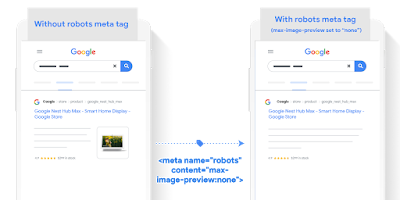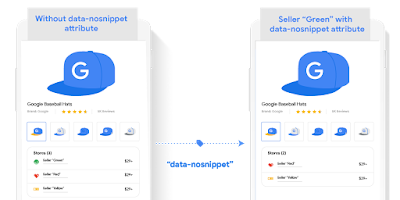Earlier this year Google launched a new way for shoppers to find clothes, shoes and other retail products on Search in the U.S. and recently announced that free retail listings are coming to product knowledge panels on Google Search. These new types of experiences on Google Search, along with the global availability of rich results for products, enable retailers to make information about their products visible to millions of Google users, for free.
The best way for retailers and brands to participate in this experience is by annotating the product information on their websites using schema.org markup or by submitting this information directly to Google Merchant Center. Retailers can refer to our documentation to learn more about showing products for free on surfaces across Google or adding schema.org markup to a website.
While the processes above are the best way to ensure that product information will appear in this Search experience, Google may also include content that has not been marked up using schema.org or submitted through Merchant Center when the content has been crawled and is related to retail. Google does this to ensure that users see a wide variety of products from a broad group of retailers when they search for information on Google.
While we believe that this approach positively benefits the retail ecosystem, we recognize that some retailers may prefer to control how their product information appears in this experience. This can be done by using existing mechanisms for Google Search, as covered below.
Controlling your preview preferences
There are a number of ways that retailers can control what data is displayed on Google. These are consistent with changes announced last year that allow website owners and retailers specifically to provide preferences on which information from their website can be shown as a preview on Google. This is done through a set of robots meta tags and an HTML attribute.
Here are some ways you can implement these controls to limit your products and product data from being displayed on Google:
“nosnippet” robots meta tag
Using this meta tag you can specify that no snippet should be shown for this page in search results. It completely removes the textual, image and rich snippet for this page on Google and removes the page from any free listing experience.
“max-snippet:[number]” robots meta tag
This meta tag allows you to specify a maximum snippet length, in characters, of a snippet for your page to be displayed on Google results. If the structured data (e.g. product name, description, price, availability) is greater than the maximum snippet length, the page will be removed from any free listing experience.
“max-image-preview:[setting]” robots meta tag
This meta tag allows you to specify a maximum size of image preview to be shown for images on this page, using either “none”, “standard”, or “large”.
“data-nosnippet” HTML attribute
This attribute allows you to specify a section on your webpage that should not be included in a snippet preview on Google. When applied to relevant attributes for offers (price, availability, ratings, image) removes the textual, image and rich snippet for this page on Google and removes the listing from any free listing experiences.
Additional notes on these preferences:
-
The above preferences do not apply to information supplied via schema.org markup on the page itself. The schema.org markup needs to be removed first, before these opt-out mechanisms can become active.
-
The opt-out preferences do not apply to product data submitted through Google Merchant Center, which offers specific mechanisms to opt-out products from appearing on surfaces across Google.
Use of mechanisms like nosnippet and data-nosnippet only affect the display of data and eligibility for certain experiences. Display restrictions don’t affect the ranking of these pages in Search. The exclusion of some parts of product data from display may prevent the product from being shown in rich results and other product results on Google.
We hope these options make it easier for you to maximize the value you get from Search and achieve your business goals. These options are available to retailers worldwide and will operate the same for results we display globally. For more information, check out our developer documentation on meta tags.
Should you have any questions, feel free to reach out to us, or drop by our webmaster help forums.





